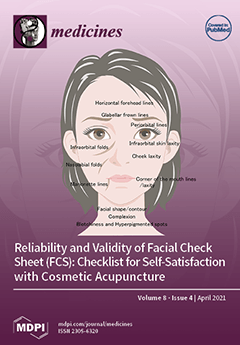Introduction: Very few frailty scales are used by general practitioners as they are time consuming and cumbersome. We designed a new scale for the rapid detection of frailty.
Methods: We developed a frailty screening tool for use in primary care, referred to as
[...] Read more.
Introduction: Very few frailty scales are used by general practitioners as they are time consuming and cumbersome. We designed a new scale for the rapid detection of frailty.
Methods: We developed a frailty screening tool for use in primary care, referred to as the Zulfiqar Frailty Scale (ZFS). This scale was tested in a general practitioner’s office for six months in Plancoët, France. Only patients over 75 years of age with Activities of Daily Living (ADL) ≥4 were included. The objective of this research was to validate the scale, evaluate its performance, and compare this screening tool with other scales such as the Fried Scale, the Gerontopole Frailty Screening Tool (GFST), the modified Short Emergency Geriatric Assessment (mSEGA) Grid A, and the Comprehensive Geriatric Assessment (CGA).
Results: A total of 102 patients were included, with a mean age of 82.65 ± 4.79; 55 were women and 47 were men. The percentage of frail subjects was 63.7% in our scale, 67.7% in the mSEGA grid A, 75.5% in the GFST, and 60.8% for the Fried criteria. After a comprehensive geriatric assessment, frailty syndrome was found in 57 patients (55.9%). In general, both scales showed solid performance, and differences between them in the sample were minimal. As the CGA showed a prevalence of frailty of 55.9%, a similar prevalence threshold for the ZFS (i.e., 64% at the threshold ≥3 could be assessed). The completion time for our scale was less than two minutes, and staff required no training beforehand. Its sensitivity was 83.9%, and its specificity was 67.5%. Its positive predictive value was 80%, and its negative predictive value was 73%. The Pearson correlations between the geriatric scores were all strong and roughly equivalent to each other.
Conclusions: Our frailty screening scale is simple, relevant, and rapid (taking less than two minutes).
Full article




